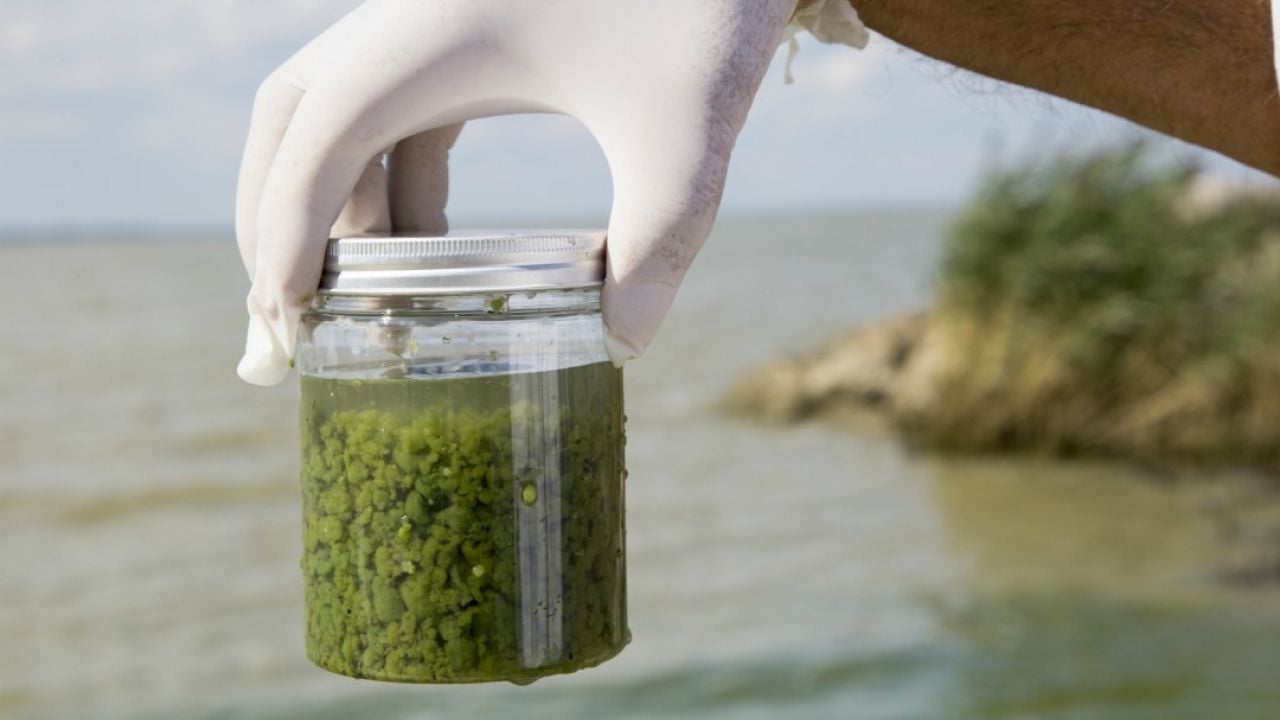
In 2011, Sen. Jim Inhofe, R-Okla., fell “deathly sick” from a severe upper respiratory illness after swimming in a lake infected with toxic algae. Inhofe, a notorious science-denying patron of corporate polluters, laughed it off as “the environment strikes back.”
Now Inhofe looks like the proverbial canary in the coal mine.
In the past decade, an epidemic of toxic algae blooms has struck hundreds of lakes, rivers and other bodies of water across the nation. In 2014, tap water for 500,000 residents of Toledo, Ohio, was rendered unsafe for drinking or other uses by an algae bloom in Lake Erie. The plague grows more widespread by the year, and this summer is predicted to be one of the worst yet.
A new EWG report looks in depth at microcystins, the poisonous toxins that can be produced by algae blooms. The blooms are actually not algae but rather micro-organisms called cyanobacteria. These toxins can cause serious health problems, which range from skin rashes to death for people and animals who drink or come into contact with the water.
As detailed in the report, algae growth, often fueled by chemical fertilizer and manure washing off farm fields and into surface water, triggers outbreaks of cyanobacteria, also known as blue-green algae. Microcystin is found virtually everywhere you look for it. What’s worse, there is a glaring lack of action from state and local governments as these toxins threaten drinking water nationwide.
What happened after the drinking water crisis in Toledo is a textbook example of an anemic response. After agricultural pollution made water undrinkable for a major American city, you’d have expected a robust government response, including strict new pollution prevention laws and a massive cleanup effort funded by farmers and other taxpayers.
Instead, it’s going to cost the citizens of Toledo $54 million to build a new treatment plant to keep harmful algal toxins like microcystin out of their drinking water. And the more than $1 billion in federal taxpayer dollars sent to Ohio farmers in the form of conservation subsidies has failed to get them to do enough to stem their pollution.
Five years after the Lake Erie catastrophe, the National Weather Service is predicting this year’s algal bloom season will be worse than usual. Heavy spring rains, exacerbated by the climate crisis, will fill the lake with phosphorous-rich fertilizers and manure running off poorly protected cropland.
Many states and communities are not equipped to deal with microcystin in fresh water resources and are not required by the government to test for it. Only a handful of states test regularly, and many provide little or no information about microcystin or other cyanotoxins produced by algae outbreaks.
The heavy rains won’t stop and are expected to get even stronger and more frequent. It’s time for farm policy to catch up to the new reality.
Polluted runoff from farm fields remains exempt from regulation under the federal Clean Water Act. Conservation subsidies are not focused on prevention or directed to places where they’re most needed. The Environmental Protection Agency has put microcystin on the candidate list for regulated water contaminants, but the process could take years – years we don’t have.


